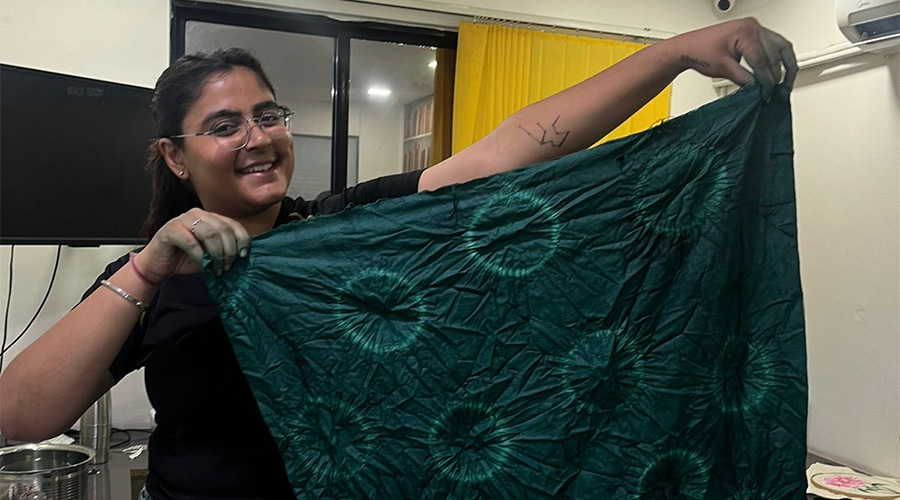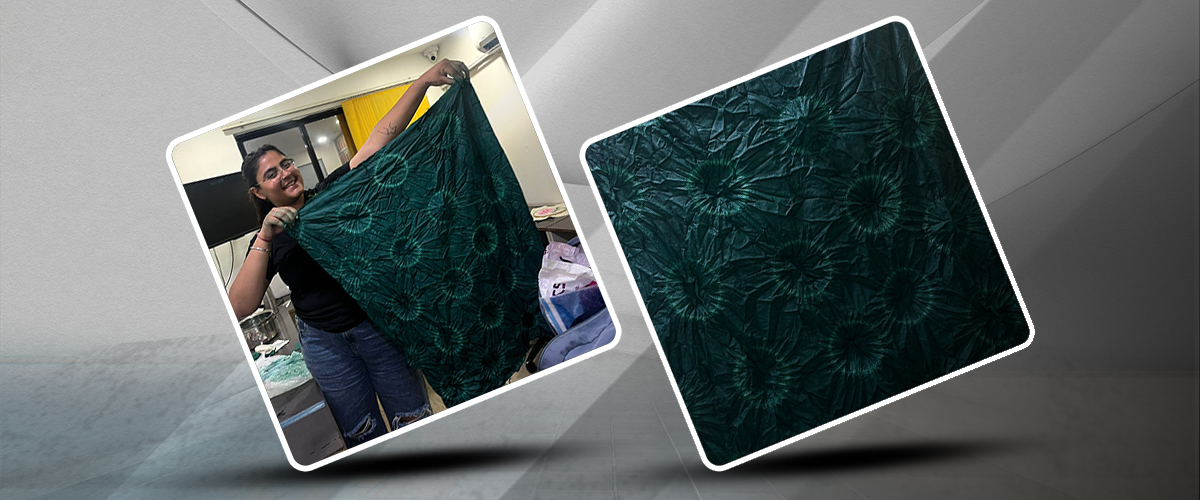At the International School of Design (INSD) Pune, creativity and innovation are at the core of our fashion curriculum. Recently, we conducted an engaging tie and dye workshop that captivated fashion students and allowed them to explore this timeless technique. This blog delves into the details of the workshop, the tie and dye technique, its significance in fashion, and why it remains a relevant skill for aspiring designers.
What is Tie and Dye?
Tie and dye, also known as bandhani or shibori in different cultures, is a traditional dyeing technique that involves tying or binding fabric to create unique patterns. By manipulating the fabric before dyeing, artists can achieve stunning designs ranging from intricate patterns to bold, abstract forms. This age-old craft not only showcases the beauty of textiles but also allows for individual expression, making it an essential skill for fashion designers.

The Importance of Learning Tie and Dye
For fashion students, mastering tie and dye is crucial for several reasons:
- Creative Expression: Tie and dye offers limitless possibilities for creativity. Students can experiment with colors, patterns, and techniques, leading to the creation of unique fabrics that reflect their personal style.
- Sustainability: In today’s fashion landscape, sustainability is more important than ever. Tie and dye can be a sustainable practice, especially when using natural dyes and upcycled fabrics. This aligns with the growing trend towards eco-friendly fashion.
- Cultural Heritage: Understanding traditional techniques like tie and dye connects students to the rich history of textile arts. It allows them to appreciate and incorporate cultural elements into their designs.
- Versatility: Tie and dye can be applied to various garments and accessories, from clothing to home textiles. This versatility makes it a valuable addition to any designer’s skill set.
The Workshop Experience at INSD Pune
The tie and dye workshop at INSD Pune was a vibrant affair filled with energy and creativity. Led by experienced instructors, the workshop catered to students at all skill levels, from beginners to those with prior knowledge of textile arts.
Hands-On Learning
The workshop was designed to be interactive, allowing students to get hands-on experience with the tie and dye process. Participants learned various tying techniques, including:
- Basic Ties: Students started with fundamental methods such as the “accordion” and “spiral” ties, which laid the groundwork for more complex designs.
- Advanced Techniques: As the workshop progressed, students explored intricate patterns like “shibori” and “bandhani,” learning how different tying methods can create stunning visual effects.
Exploring Colors
A significant highlight of the workshop was the exploration of colors. Students were introduced to different dyeing materials, including natural and synthetic dyes. They learned how to mix colors, understand color theory, and create harmonious palettes that would enhance their designs.
The instructors emphasized the importance of experimenting with color combinations, encouraging students to think outside the box. This exploration led to some breathtaking results, as students discovered the joy of transforming plain fabric into vibrant works of art.
Collaboration and Inspiration
The workshop also fostered collaboration among students. As they worked side by side, they shared ideas, techniques, and inspirations. This collaborative spirit is a cornerstone of ISD Pune’s educational philosophy, encouraging students to learn from one another and build a supportive creative community.
The Impact of the Workshop
The tie and dye workshop left a lasting impact on participants, sparking their creativity and inspiring new design ideas. Here are some key takeaways from the experience:
Enhanced Skill Set
Students walked away with a newfound appreciation for tie and dye techniques and the confidence to incorporate these skills into their future projects. Many expressed excitement about using their hand-dyed fabrics in upcoming collections.
Creative Freedom
The freedom to experiment with colors and patterns allowed students to break away from traditional design constraints. They realized that tie and dye is not just a technique but a form of artistic expression that can elevate their work.
Sustainability Awareness
With a focus on sustainable practices, the workshop instilled a greater awareness of eco-friendly fashion. Students learned how to use natural dyes and upcycled materials, fostering a commitment to responsible design practices.
The Relevance of Tie and Dye in Fashion Today
In the ever-evolving world of fashion, tie and dye remains a relevant and sought-after technique. Its resurgence can be attributed to several factors:
- Trend Revival: Tie and dye has made a comeback in recent years, with many high-profile designers incorporating it into their collections. This trend reflects a growing desire for unique, handcrafted pieces that stand out in a mass-produced market.
- Customization: Consumers increasingly seek personalized fashion. Tie and dye allows designers to create one-of-a-kind pieces, appealing to a market that values individuality.
- Sustainable Fashion Movement: As consumers become more environmentally conscious, there is a growing demand for sustainable practices in fashion. Tie and dye, especially when using natural dyes, aligns perfectly with this movement.
As students continue to explore the world of tie and dye, they carry with them the skills, knowledge, and inspiration to create stunning, meaningful designs that resonate with today’s fashion landscape. The workshop reinforced our commitment to fostering creativity, sustainability, and cultural appreciation among the next generation of fashion designers.
At INSD Pune, we believe that every thread woven into a design tells a story, and through workshops like these, we help our students craft narratives that are vibrant, impactful, and true to their artistic identity.



